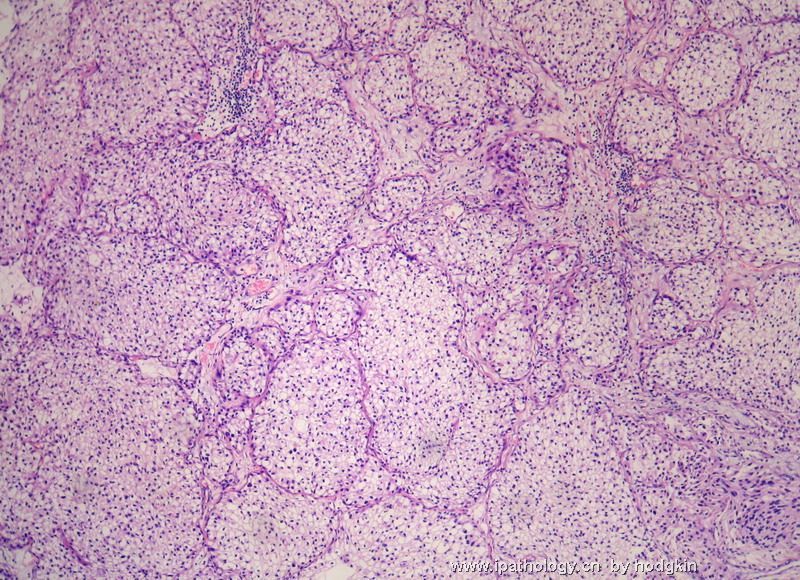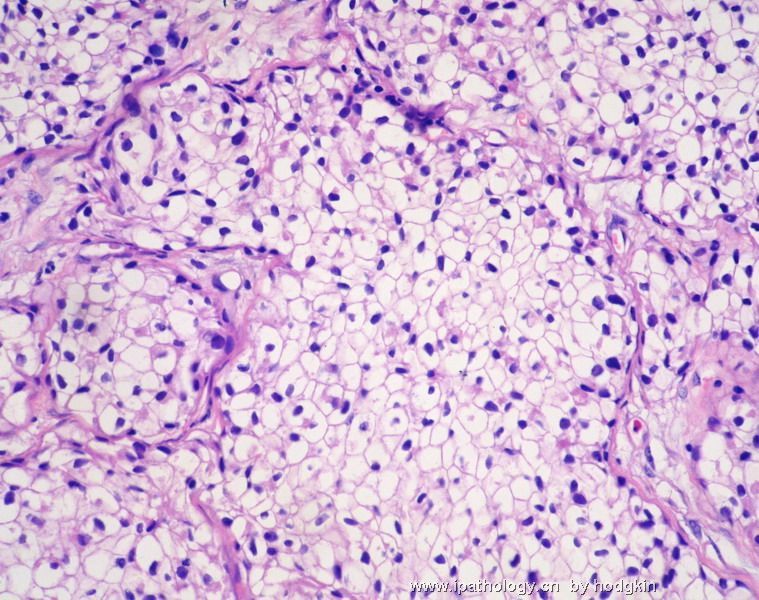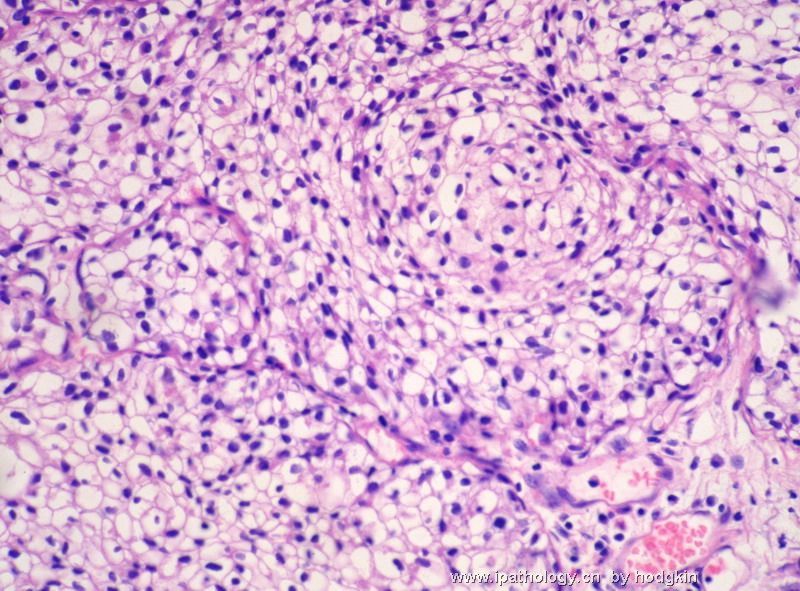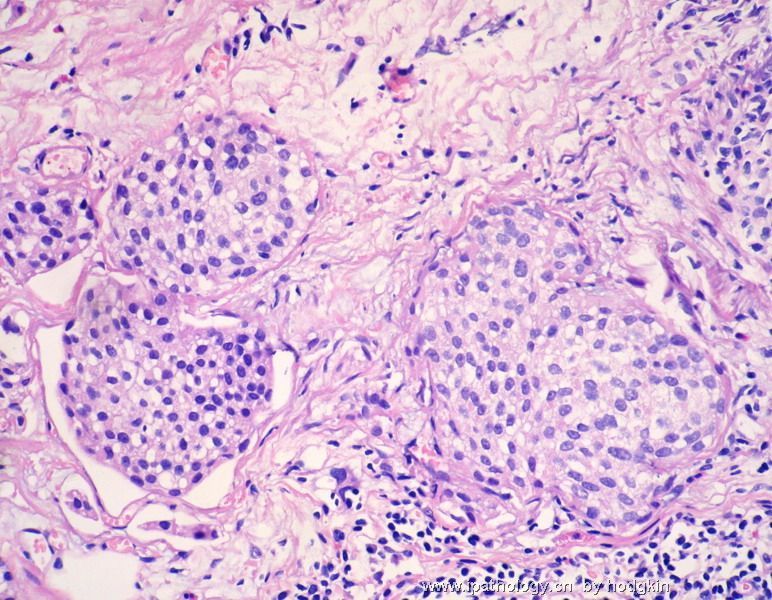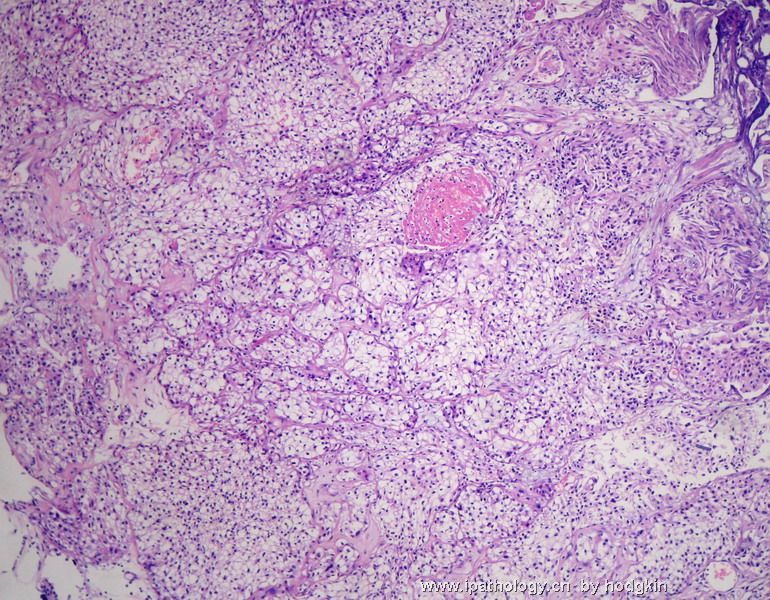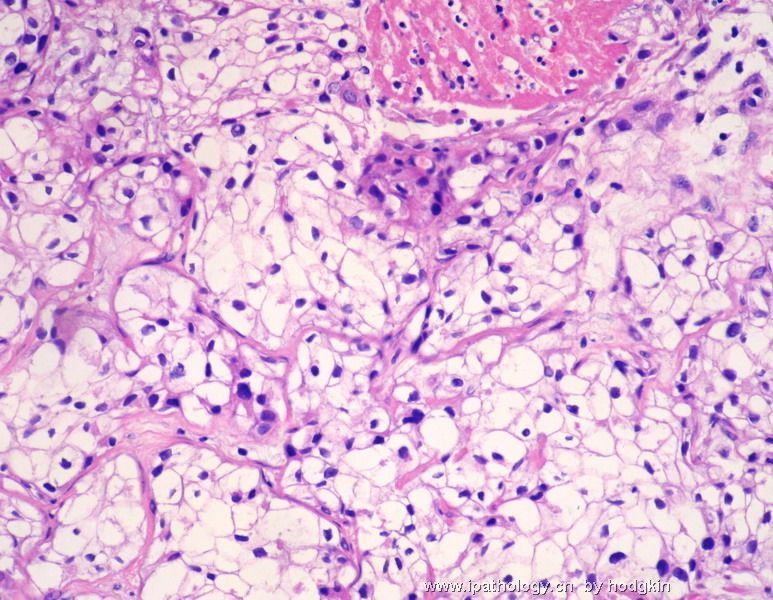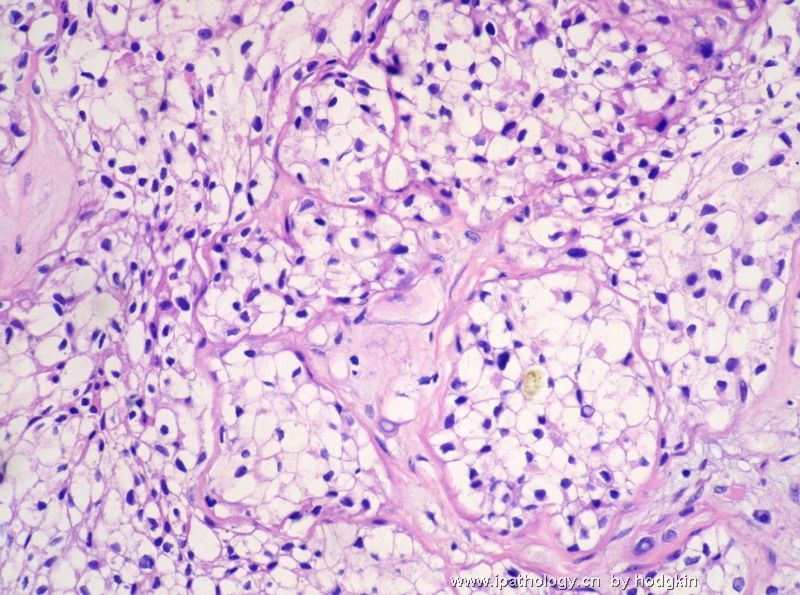| 图片: | |
|---|---|
| 名称: | |
| 描述: | |
- 男性,65岁,膀胱菜花状肿物约1.8*1.5CM.
-
echohanxiao 离线
- 帖子:367
- 粉蓝豆:1
- 经验:386
- 注册时间:2010-01-09
- 加关注 | 发消息
-
liguoxia71 离线
- 帖子:4174
- 粉蓝豆:3122
- 经验:4677
- 注册时间:2007-04-01
- 加关注 | 发消息
-
stevenshen 离线
- 帖子:343
- 粉蓝豆:2
- 经验:343
- 注册时间:2008-06-03
- 加关注 | 发消息
-
This is a very interesting and difficult case to interpret. Overall features still favor a urothelial neoplasm with clear cell changes, but need to rule out the possibility of metastatic renal cell or even prostate cancer by history and immunostains if necessary. Although it is described as 菜花状, but there is no exophytic or papillary growth pattern (which would strongly favor urothelial origin). My guess this is a neoplasm because the amount of cellular proliferation is too confluent for even exuberant von Brunn's nests. The neoplasm growth entirely endophytic with some areas suggestive of invasion. However, the cytologic features are pretty bland. No significant cellular pleomorphism or mitoses. Small questionable area of necrosis is present. No difinitive desmoplasia is seen. My best guess for this 肿物 is still papillary urothelial carcinoma with endophytic and nested pattern, and less likely inverted papilloma with clear cell change. Looking foward to hearing other opinions and final answer.

